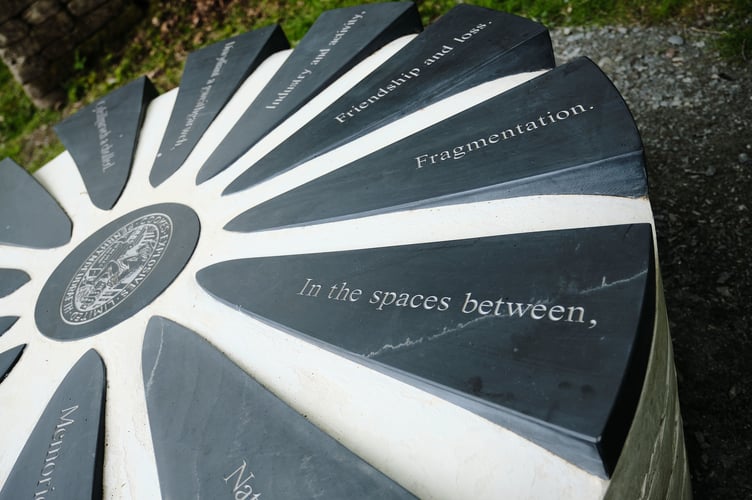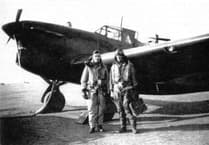Locals and former staff of Cooke’s Explosives Works joined the North Wales Wildlife Trust (NWWT) team, Gwerin y Coed and Ramblers Cymru in Penrhyndeudraeth on Sunday (14th May), to witness the dedication of a memorial to everyone who worked there.
The sculpture, situated on the old site, which is now a woodland nature reserve, is not only for those who sadly lost their lives there in an inevitably dangerous environment, but to all of the local people who enjoyed working at Cooke’s over the decades until it closed its gates in 1995.
The works opened on the edge of the village in 1865 providing explosives for the coal and slate mining industry and closed in 1995 with the demise of the mines.
The memorial has been designed by renowned sculptor, Howard Bowcott and inspired by the nitroglycerine mixing shed machinery which once stood in its place.

The ceremony took place in a now quiet shaded corner of the North Wales Wildlife Trust Gwaith Powdwr Nature Reserve.
It was led by the site’s former North Wales Wildlife Trust Reserve Officer, Rob Booth and Luke Jones who has taken over his role.
Mabon ap Gwynfor, MS for Dwyfor Meirionnydd enjoyed taking part in a guided walk led by Ramblers Cymru, before unveiling the memorial.
After Mabon and Howard had jointly unveiled the memorial, which is decorated with leaves to incorporate the natural world that has now taken over Gwaith Powdwr, a group of retired former workers joined them to share their moving memories.
John Richard Jones had been a manager at Cookes and he said he had seen the changes at the sites and the explosions. He spoke of his sadness at the loss of colleagues but also of the family atmosphere amongst workers.
“When I come here I remember. I knew the people personally and it is very sad really.
“Then again you had the other side to it. Everyone here knew they were handling very dangerous material but there was still laughter.
“Today brings back the nice memories.”
The woodland which has flourished on the Cookes Site over the last 25 years provides homes to nesting redstarts, pied flycatchers and tree pipits and, on a summer day, the grassy glades are great places to spot butterflies and wildflowers. The heathland that covers the higher ground hides secretive nightjars and basking reptiles: four of the six UK reptile species are commonly seen here. The remaining factory buildings now provide a home to a population of rare Lesser horseshoe bats.
The memorial and the opening event were made possible by NWWT grant money from the Nature Network fund and the Landfill tax, with contributions from Ramblers Cymru and Gwerin y Coed.





Comments
This article has no comments yet. Be the first to leave a comment.